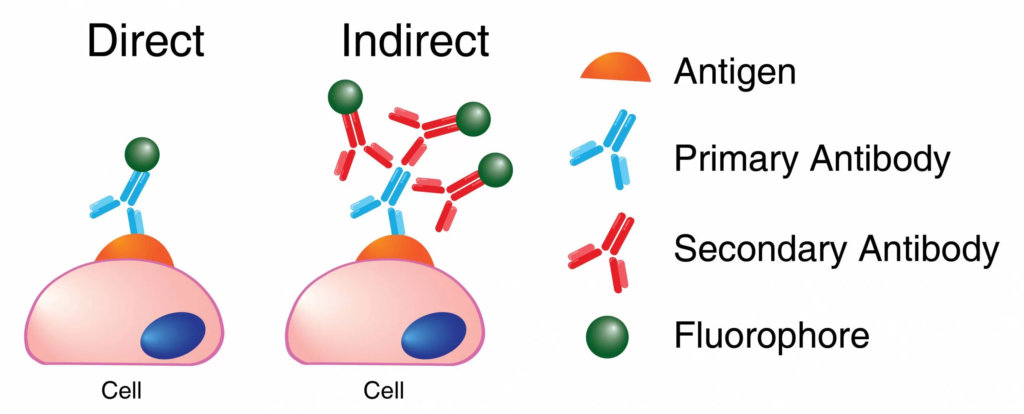Introduction to Secondary Antibodies
Secondary antibodies bind to the unconjugated primary antibody to detect the antigen that the primary antibody is bound to. These antibodies are usually purified using an antigen affinity purification system where the antigen attached to the chromatography matrix is an immunoglobulin of the same Ig class as the primary antibody. Sometimes a secondary antibody, which is actually polyclonal in nature, must be absorbed by additional chromatography techniques to remove potential cross-reactivity to other antibodies or serum proteins from other animal species. This can be an advantage to using the indirect secondary antibody system to detect primary antibodies because signal amplification occurs when multiple secondary antibodies bind to a single primary antibody.
5 Main Advantages
- Sensitivity – Increased sensitivity due to signal amplification from multiple secondary antibodies binding to the single primary antibody.
- Versatile – Can be used to detect many different unconjugated primary antibodies without having to conjugate each primary antibody to a separate reporter molecule.
- Flexibility – Secondary antibodies with the specific specificity for the primary antibodies of common species are widely available pre-conjugated to many common reporter molecule (fluorescent and enzyme conjugates) options.
- Dynamic – In some cases these antibodies can be used across applications to validate target antigen detection such as fluorescent western blot and immunofluorescence.
- Multiplexing – May offer the ability to perform multi-labeling experiments for immunocytochemistry and immunohistochemistry and is therefore extremely useful in examining the behaviour and interactions between cellular proteins.

Information originally posted by Leinco Technologies on: https://www.leinco.com/secondary-antibodies/
Caltag Medsystems is the distributor of Leinco Technologies’ products in the UK and Ireland. If you have any questions about these products, please contact us.
